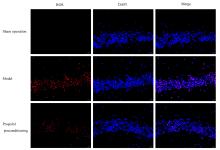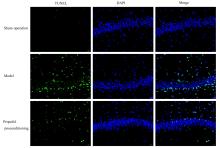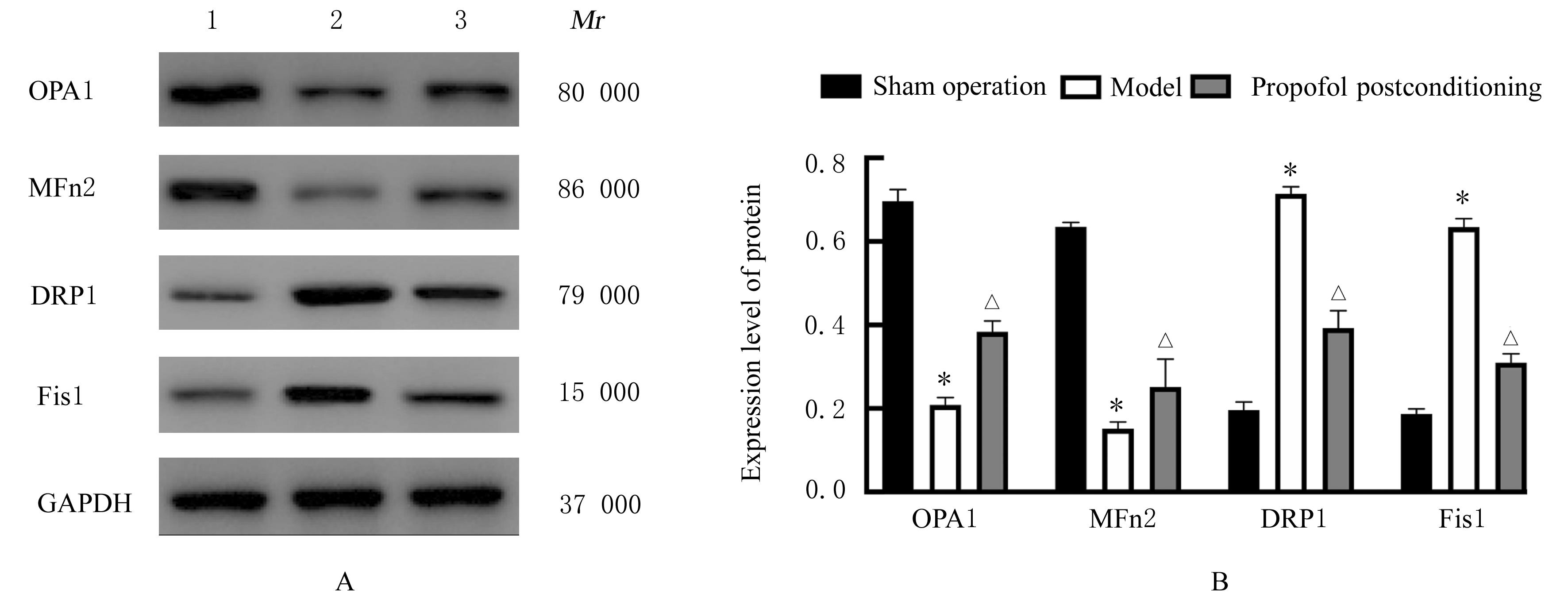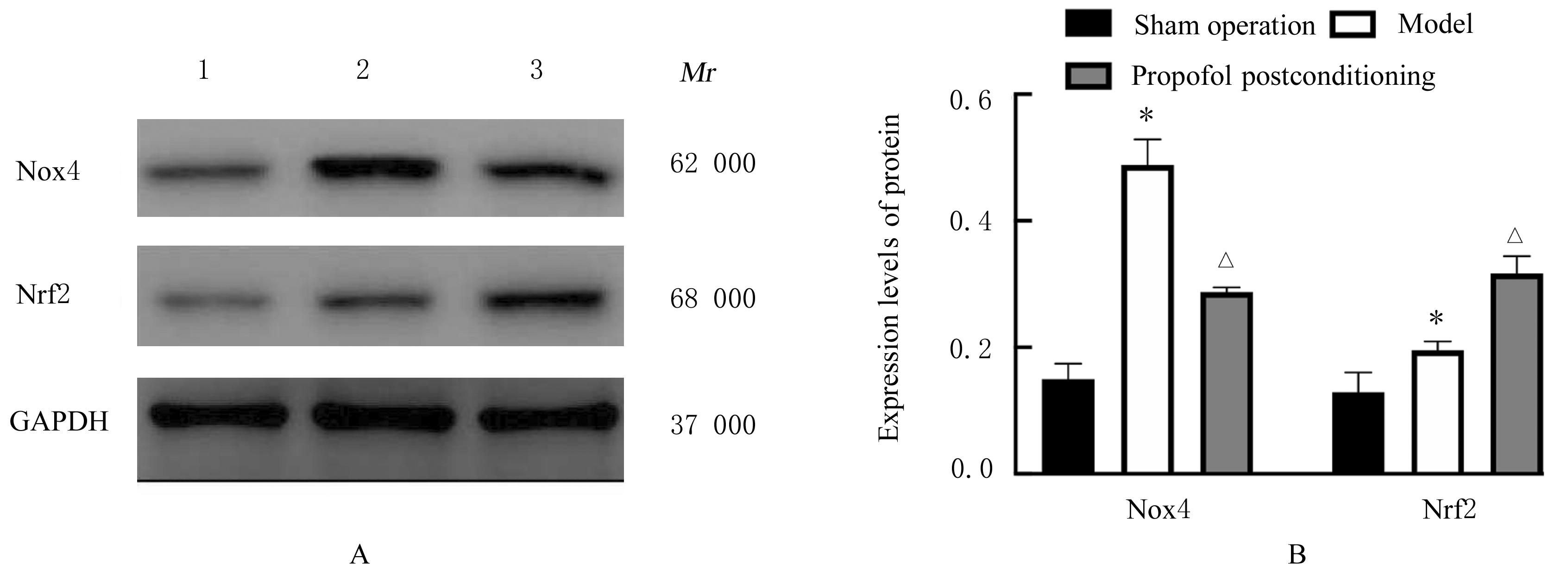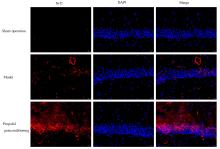| [1] |
Chuan LIU,Huan LI,Dawei WANG.
Effects of Dendrobium huoshanense polysaccharide on oxidative stress and inflammation in brain tissue of mice with Parkinson’s disease
[J]. Journal of Jilin University(Medicine Edition), 2023, 49(1): 110-115.
|
| [2] |
Yaping ZHANG,Haijuan SUI,Enzhi YAN.
Protective effect of rosmarinic acid on Aβ1-42-induced astrocyte injury by activating Nrf2/HO-1 pathway
[J]. Journal of Jilin University(Medicine Edition), 2023, 49(1): 22-30.
|
| [3] |
Hao LI,Dongge LIU,Shuqi YAN,Shuping REN.
Improvement effect of 1,25(OH)2D3 combined with astragalus polysaccharide on insulin resistance of skeletal muscle cells in vitro and its mechanism
[J]. Journal of Jilin University(Medicine Edition), 2022, 48(6): 1411-1421.
|
| [4] |
Junxiu LIU,Jia ZHOU,Guangfu LYU,Yuchen WANG,Xuefeng ZHUANG,Jiarui ZHAO,Xiaowei HUANG,Ruili LI.
Protective effect of Shenhong Buxue Granule on vascular endothelium of mice with vascular endothelial dysfunction of Qi stagnation and blood stasis type and its mechanism
[J]. Journal of Jilin University(Medicine Edition), 2022, 48(6): 1437-1447.
|
| [5] |
Xiaochen HUANG,Hao LI,Baohua WANG,Kai LI.
Protective effect of lidocaine on PC12 cells in Parkinson’s disease model and its mechanism
[J]. Journal of Jilin University(Medicine Edition), 2022, 48(3): 638-647.
|
| [6] |
Yang ZHOU,Xuguang MI,Wenxing PU,Wentao WANG,Meng JING,Fankai MENG.
Ameliorative effect of melatonin on oxidative stress of human neuroblastoma SHSY5Y cells induced by hydrogen peroxide and its mechanism
[J]. Journal of Jilin University(Medicine Edition), 2022, 48(2): 340-347.
|
| [7] |
Leihua CUI,Yubo HOU,Chang SU,Minghe LI,Xin NIE.
Effect of N-acetylcysteine on apoptosis of MC3T3-E1 cells induced by nicotine and its mechanism
[J]. Journal of Jilin University(Medicine Edition), 2022, 48(1): 26-32.
|
| [8] |
Jie GONG,Zehua LEI,Yuanwei ZHANG,Xiong HUNANG,Bo DU,Zhixu WANG.
Improvement effect of miR-490-3p over-expression on non-alcoholic fatty liver disease in rats and its mechanism
[J]. Journal of Jilin University(Medicine Edition), 2021, 47(6): 1495-1501.
|
| [9] |
Xinghua WANG,Hongjuan YANG,Xiuhong HU,Hongrei CUI,Baozhen XU,Danlu LI,Tao WANG,Yuwei GAO.
Effects of N-acetyl-L-cysteine on oxidative stress and vascular endothelial function in rats with hyperuricemia and their mechanisms
[J]. Journal of Jilin University(Medicine Edition), 2021, 47(5): 1209-1214.
|
| [10] |
Dimi ZHOU,Lu GAN,Lin CHEN,Chengfang ZHOU,Liang ZENG.
Neuroprotective effect of Withaferin A on ischemic stroke rats and its mechanism
[J]. Journal of Jilin University(Medicine Edition), 2021, 47(4): 919-925.
|
| [11] |
Zhanqi ZHAO,Chengjin ZHANG,Juan TIAN.
Inhibitory effect of Ndfip1 on ferrion-induced neuronal apoptosis and its neuroprotective mechanism
[J]. Journal of Jilin University(Medicine Edition), 2021, 47(2): 338-343.
|
| [12] |
Ruili ZHANG,Xiaoqing YANG,Xiaoge ZHANG,Huafeng GUO,Jihong ZHU.
Effect of gestational diabetes mellitus on diaphragmatic function of newborn offsprings of rats
[J]. Journal of Jilin University(Medicine Edition), 2021, 47(1): 133-138.
|
| [13] |
Hongfang LI,Shao YANG,Mohan CAO,Lili YUAN,Xiaojin LI,Caixing SHI,Zhuoya WANG,Bailiu YA.
Improvement effect of curcumin on cerebral microcirculation disorder in hypercholesterolemia model rats and its mechanism
[J]. Journal of Jilin University(Medicine Edition), 2021, 47(1): 53-58.
|
| [14] |
Fangduo JIN,Tian ZHANG,Zhao ZHANG,Xuezhe YIN,Jishu QUAN.
Protective effect of rutin on oxidative stress injury of HepG2 cells and its mechanism
[J]. Journal of Jilin University(Medicine Edition), 2020, 46(6): 1117-1123.
|
| [15] |
Mengran XU,Jiaqi WANG,Jingwen GAO,Junhong GE,Junyu HOU,Minghui LI,Yanbo LIU,Xin SUN.
Protective effect of Bupleurum chinense polysaccharide on aging model mice induced by D-galactose and its mechanism
[J]. Journal of Jilin University(Medicine Edition), 2020, 46(6): 1215-1220.
|
 )
)


